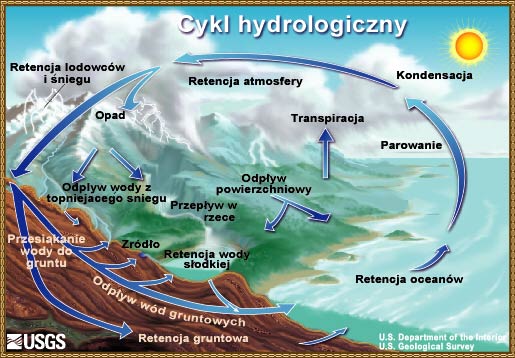Understanding the relationship between ecosystems and natural water cycle can save our cities from a climate catastrophe and bring new and extraordinary visions of development.
A drop of theory
Water is the cradle of life. Although hundreds of millions of years have passed since our ancestors left it, both we and life around us still depend entirely on its biogeochemical cycle. From raindrops to the ocean – water encounters a wealth of animate and inanimate nature.
The complex interdependencies of life and water and dead matter lead to a balance thanks to which the known ecosystems with their richness and beauty can exist.
Ecohydrology deals with these interdependencies. Its practical application allows the properties of ecosystems to be modified so that they become more resistant to changes resulting from human activity. Cities are one of the main areas of interest for ecohydrologists.
Years of practice
The practical implementation of this knowledge allows for the creation of a water cycle in cities more closely related to nature. These are not only popular rain gardens, but also specific guidelines for all types of infrastructure and urban greenery.
When rainwater, instead of flowing into the sewage system, nourishes urban nature, it can become an important factor influencing the quality of life. It is possible thanks to the improvement of the microclimate, landscape and limitation of unfavourable phenomena such as drought and flood.
“Sequential sedimentation and biofiltration system” is a very advanced ecohydrological technology. It allows for restoring degraded urban rivers to life. The system is a cascade of reservoirs stabilizing the current and then purifying the water, thanks to the devices designed for this purpose and the properties of the ecosystem. It is the result of many years of research conducted by scientists from the European
Regional Centre for Ecohydrology in Łódź under the supervision of the director of this institution – a world pioneer in ecohydrology – Professor Maciej Zalewski. Its first practical applications were the cleaning of the Sokołówka River and the restoration of the Arturówek bathing area in Łódź.
An ocean of possibilities
Professor Zalewski and his associates have also developed a proposal for the wide implementation of this technology in urban space.
The “Blue and Green Network” is a coherent system of green areas based on renatured urban rivers and watercourses. It can become the basis for the city’s development by connecting parks, bathing areas and important public spaces. This concept, proposed for Łódź, is still in the planning and initial implementation stages. However, if implemented successfully, it may become an inspiration for many urban
centres around the world.
Planning the development of cities on the basis of green areas and a rebuilt hydrological network may make them interesting and attractive places to live, even in the era of radical climate changes.
And although our ancestors came ashore a long time ago, there is a chance that in the future the shape of our human settlements will be largely determined by the advances in technology shaping water ecosystems.
Łukasz Kamiński













